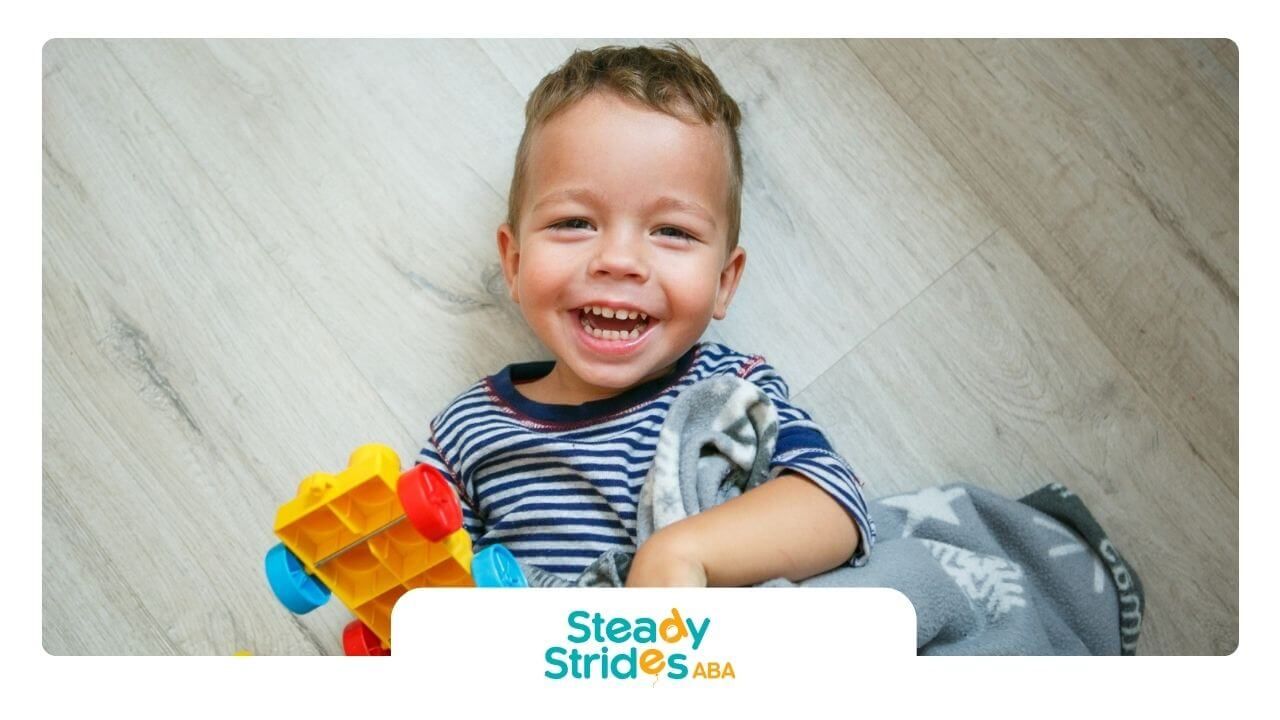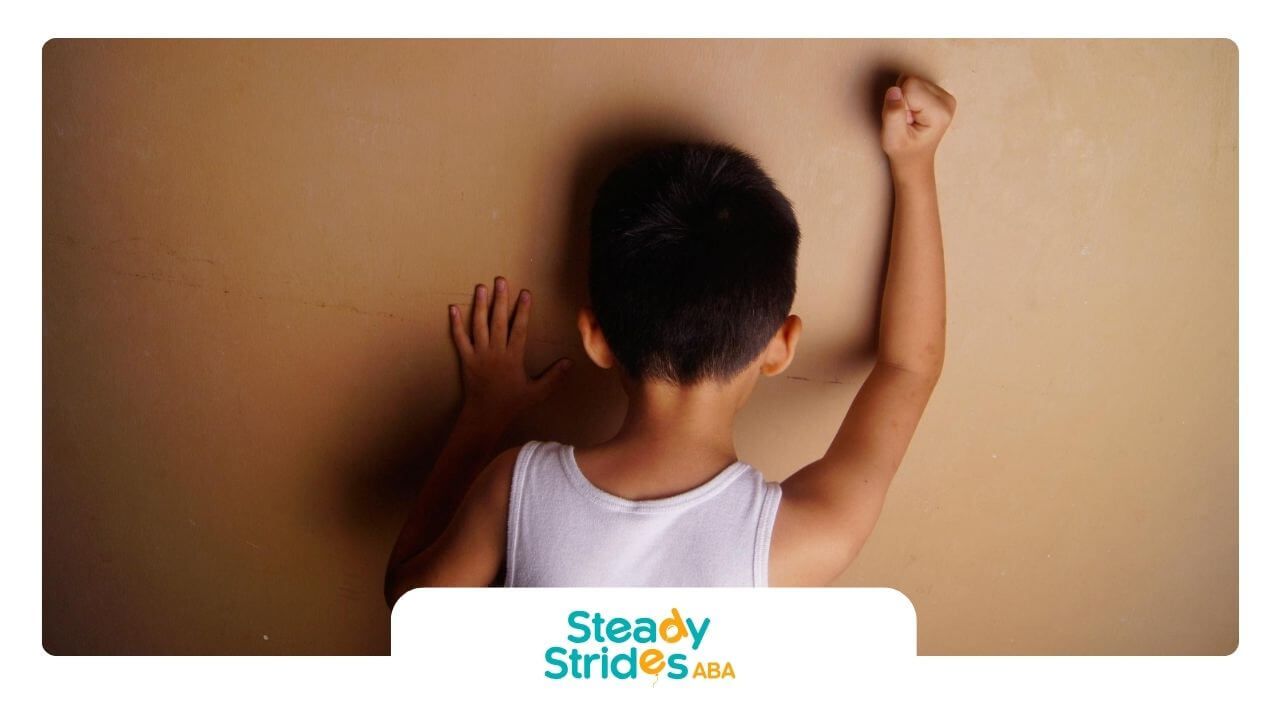Key Highlights
- ABA sessions incorporate proven techniques such as Discrete Trial Training and Natural Environment Teaching to develop new skills and reduce challenging behaviors.
- Collaboration between BCBAs and parents ensures the child’s unique needs are addressed, enhancing communication and social interaction.
- Pre-session preparation, including gathering materials and goal setting, helps create a supportive environment for effective learning.
- Positive reinforcement and structured routines build desired behaviors while fostering motivation and progress.
- Tailoring session plans to a child’s development, interests, and abilities promotes meaningful and lasting improvements in their quality of life.
Every ABA session is a chance to make a meaningful impact. Whether you're teaching a new skill or reinforcing progress, the right structure and mindset matter. The key is consistency—and knowing what works for each child.
One of my clients in center-based ABA therapy, an energetic 6-year-old, had difficulty sitting for tasks. We started using movement breaks and a first-then board, and his ability to complete activities improved dramatically. That success came from making sessions adaptable, engaging, and child-led.
The Importance of Teamwork Between BCBAs and Parents
Working Together Builds Progress
A collaborative approach between therapists and families creates consistency. BCBAs design and monitor the plan, while parents carry strategies into everyday settings. This ensures the skills children learn during therapy sessions are reinforced at home, school, and in the community.
According to Dr. Mary Barbera, BCBA-D, "Parental involvement is the number one predictor of success in ABA programs."
Keeping Communication Open
Regular check-ins, shared data, and honest conversations help both sides stay aligned. I always encourage parents to note changes at home, even small ones — they’re often the first to spot subtle progress or setbacks.
How to Prepare for an ABA Session
Step 1: Review the Child’s Current Goals
Before starting a session, review the treatment plan. Has the child met any goals? Are new skills emerging? Adjust your strategy accordingly to stay on track.
Step 2: Gather Materials Ahead of Time
Make sure reinforcers, learning tools, and data collection sheets are ready. Some essentials include:
- Preferred reinforcers (e.g., small toys, snacks, iPad time)
- Visual supports like PECS or social stories
- Session-specific tools, like sorting items or flashcards
- Data collection systems (paper or electronic)
I always have a backup reinforcer ready — just in case the child isn't responding to the first choice. Preferences can change quickly, especially with younger kids.
Step 3: Set Up a Distraction-Free Environment
Where the session happens matters. Keep the space uncluttered and quiet. You don’t need fancy equipment — just a consistent, calm area with few distractions.
How to Create Meaningful ABA Session Goals
Use the SMART Goal Framework
Set goals that are:
- Specific
- Measurable
- Achievable
- Relevant
- Time-bound
Instead of “Improve communication,” try:
“Child will request preferred items using two-word phrases, three times per session, over one week.”
Individualize Every Plan
Each child has different needs, learning styles, and motivators. That’s why your session plans should include:
- ABA strategies (e.g., DTT or NET)
- Reinforcement plans
- Troubleshooting methods for behavior
Key Elements of a Successful ABA Session
Using Positive Reinforcement to Encourage Success
Positive reinforcement keeps children engaged and motivated. Whether it’s high-fives, verbal praise, or access to a favorite toy, the goal is to immediately reward desired behavior.
I once worked with a child who responded best to bubbles — not stickers or snacks. Every time he completed a task, I’d blow bubbles. It became a powerful motivator.
Use preference assessments regularly to keep reinforcers fresh and effective.
Incorporating Visual Supports and Routines
Children thrive when they know what to expect. Try using:
- Picture schedules
- First-Then boards
- Color-coded charts
- Social stories for transitions or tough situations
Structured routines paired with visual supports reduce anxiety and improve focus. Transitions become smoother, and engagement increases.
Evidence-Based Techniques That Make a Difference
Discrete Trial Training (DTT)
DTT is a structured approach that breaks skills into small, teachable components. Each trial follows a clear sequence: prompt → response → reinforcement.
Use DTT when teaching:
- Matching or sorting
- Basic language skills
- Imitation or early academics
Keep trials short and reinforce quickly. Consistency and repetition are key.
Natural Environment Teaching (NET)
NET uses naturally occurring situations to teach. It’s less structured than DTT and focuses on generalizing skills.
Examples:
- During snack time: “What do you want?” → “Juice” → “Nice asking! Here you go.”
- During play: “Let’s build a tower!” → Child counts blocks → Reinforcement through praise
NET builds communication and social interaction in real-life settings.
What to Do When Challenges Come Up
Handling Problem Behaviors
Sometimes, a child resists tasks or acts out. Stay calm and observe what might be causing the behavior. Use:
- Functional Communication Training (FCT)
- Visual reminders
- Reinforcement for replacement behaviors
Avoid punishing behavior without understanding its function. Behavior is communication.
Being Flexible and Adjusting Strategies
Not every strategy will work with every child. Be ready to:
- Switch reinforcers
- Adjust difficulty levels
- Take short breaks
Adaptability leads to more successful sessions and a stronger connection with the child.
Tailoring ABA to Age and Learning Style
For Younger Children
Use sensory activities, songs, and big visuals. Keep instructions short and celebrate even small wins.
For Older Children
Incorporate real-life scenarios. Use role-playing to build conversation skills or problem-solving strategies.
Match teaching methods to how the child learns best — whether that’s visually, through movement, or with hands-on tools.
Conclusion: Building Meaningful Progress, One Session at a Time
ABA therapy isn't about perfection — it’s about progress. Every session is a step toward independence, confidence, and improved quality of life. With preparation, teamwork, and patience, both BCBAs and parents can create sessions that truly support each child’s unique growth.
Celebrate the small wins. They’re often the biggest.
At Steady Strides ABA, our experienced BCBAs work closely with families to create supportive, goal-driven sessions that build confidence and real-life skills. Whether you're just starting out or looking to refine your child’s program, we’re here to guide you every step of the way.
Contact us today to learn how Steady Strides ABA can support your child’s growth—one session at a time.
Frequently Asked Questions
How long should an ABA session last for optimal learning?
An ABA session can last from 30 to 60 minutes. The time depends on what each person needs and how they respond to the work. If you are working with younger children or with people who do not have a long attention span, it might be better to keep the aba session shorter. For those who are further along and can focus for a longer time, a longer aba session may help them more.
How can parents actively participate during ABA sessions?
Parents can be part of ABA sessions in many ways. They can watch how things are done. They can share what they think about the process. Parents can also help by using the same actions at home that the child learns during sessions. When parents and the therapist talk about the goals and steps, it helps the child learn better. This teamwork builds a supportive environment. The way parents stay involved is very important to help their child do well.
How do you measure progress in ABA therapy?
Measuring progress in ABA therapy means keeping track of certain behaviors. This is done by using data collection methods like counting how often a behavior happens, how long it lasts, and how strong it is. Regular check-ins help people see what is getting better. They also show which areas need changes. This helps make sure the aba therapy is still good for the person’s own needs and goals.
Sources:
- https://www.autismspeaks.org/applied-behavior-analysis
- https://www.webmd.com/mental-health/what-is-applied-behavior-analysis
- https://online.regiscollege.edu/blog/aba-therapy-examples/
- https://gsep.pepperdine.edu/blog/posts/aba-techniques-strategies-for-behavior-analysts.htm
- https://my.clevelandclinic.org/health/treatments/25197-applied-behavior-analysis













